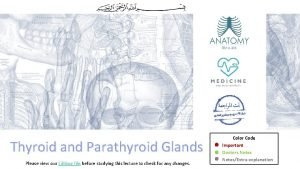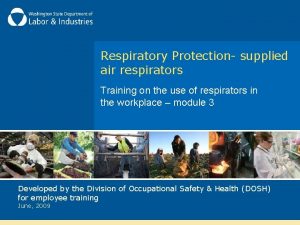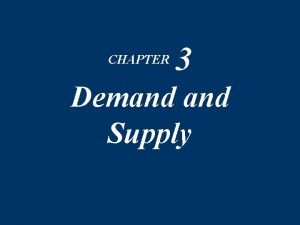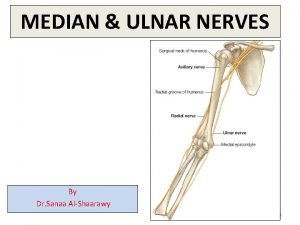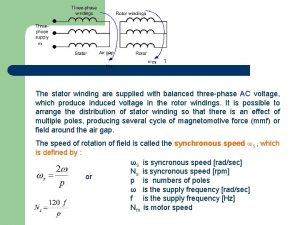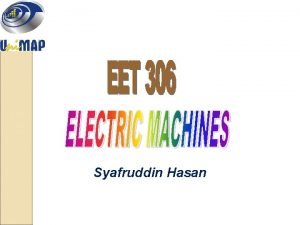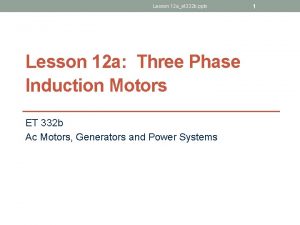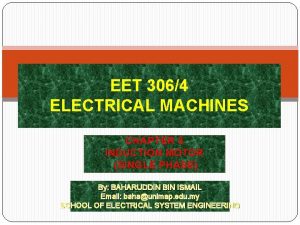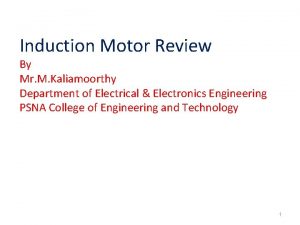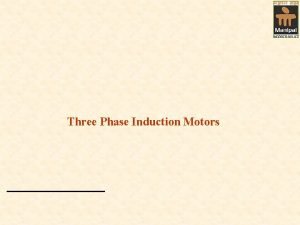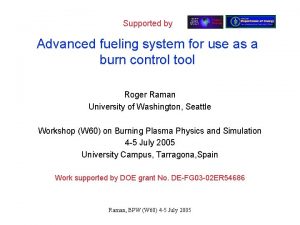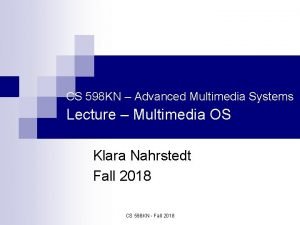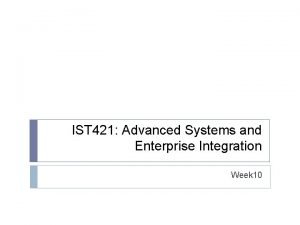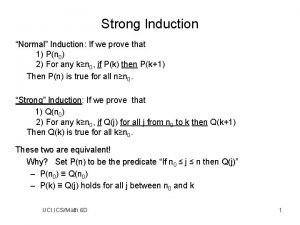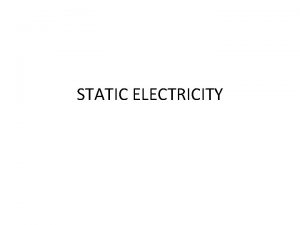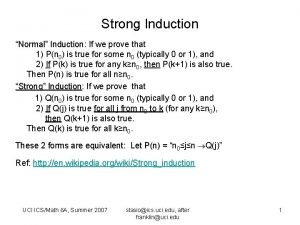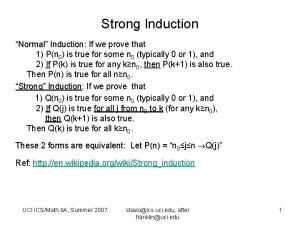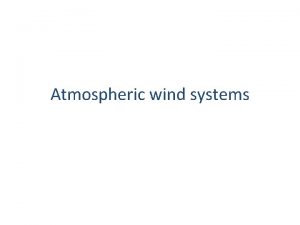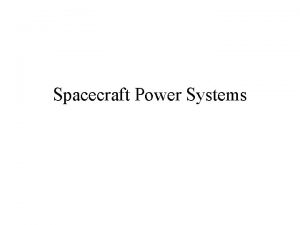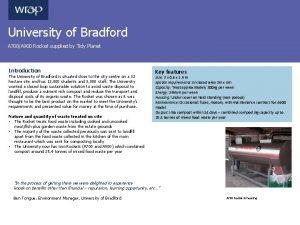Advanced Power Systems IM Induction MachinesIntroduction When supplied






















- Slides: 22

Advanced Power Systems IM

Induction Machines_Introduction § When supplied from a balanced three-phase (polyphase) source, the three-phase (polyphase) stator winding produces a rotating magnetic field. The magnetic field rotates at a synchronous speed given by: This phenomenon applies to synchronous motors as well. § Due to the stator magnetic field, an emf is induced in the rotor winding. The emf sets up a current in the rotor. § Current-carrying rotor winding (conductors) under the stator magnetic field produces a torque (force) in the direction of the rotating stator magnetic field. § An induction machine may be regarded as a transformer. The rotor (current) frequency is, however, different from the stator (current) frequency.

Slip: The difference between the speed of the rotating flux produced by the stator and the speed of the rotor is called slip speed, and the ratio of slip speed to synchronous speed is called slip. where: ns = synchronous speed nr = rotor speed (r/min) s = slip The slip depends on the mechanical load connected to the rotor shaft. Increasing the shaft load decreases the rotor speed, thus increasing the slip.

Modeling Induction Machines_1 Kundur, p. 279 n Motor Mode of Operation: At no-load, the machine operates at negligible slip. If a mechanical load is applied, the slip increases such that the induced voltage and current produce the torque required by the load. The machine thus operates as a motor. n Generator Mode of Operation: If the rotor is driven by a primemover at a speed greater than that of the stator field, the slip is negative. The polarities of the induced voltages are reversed so that the resulting torque is opposite in direction to that of rotation. The machine thus operates as a generator.

Modeling Induction Machines_2 In developing the model of induction machines, following aspects will differ from those of synchronous machines: n The d- and q-axis equivalent circuits are identical as the rotor has symmetrical structure. n The rotor speed is not fixed but varies with load. This has an impact on the selection of the d-q reference frame. n There is no excitation source to the rotor windings. Consequently, the dynamics of the rotor circuits are determined by slip. n The current induced in the shorted rotor windings produce a field with the same number of poles as that produced by the stator windings. Rotor windings may therefore be modeled by an equivalent three-phase winding.

Stator and Rotor Circuits

Basic Machine Equations in d-q Reference Frame Stator voltages: Transient term Speed voltage term Stator winding voltage drop term Rotor voltages: Power input to the stator: Power input to the rotor: Rotor speed voltages created in the rotor windings moving at slip speed w. r. to. the synchronously rotating flux wave.

Power and Electromagnetic Torque The electromagnetic torque developed is obtained as the power associated with the speed voltages divided by the shaft speed in mechanical radian per second. The speed voltage terms associated with the rotor: Power associated with the speed voltage: The electromagnetic torque:

Acceleration Equation The electromagnetic torque developed by the motor drives the mechanical load. If there is a mismatch between the electromagnetic torque (Te) and the mechanical load torque (Tm), the differential torque accelerates the rotor mass. Consequently, where, H is the combined moment of inertia of the rotor and the connected load and wr is the angular velocity of the rotor.

Representation in Stability Studies For representation in power system stability studies, the transient voltage terms are neglected in the stator voltage equations. With the stator transients neglected and rotor windings shorted, the per unit induction motor electrical equations can be summarized as follows: Stator voltages Rotor voltages Flux linkages

Representation in Stability Studies (cont’d) To reduce the previous equations to a form suitable for implementation in a stability program, the rotor currents can be eliminated and the relationship between the stator current and voltage in terms of a voltage behind the transient reactance can be expressed as follows:

Representation in Stability Studies (cont’d) Where, Transient reactance of the induction machine

Representation in Stability Studies (cont’d) The stator voltages: The stator voltage equation can be combined and can be expressed in the following form: The above relationship can be expressed in the following form: Rs + Vs X’s Is + V’ Vs: stator terminal voltage V’: voltage behind aaatransient impedance Induction machine transient equivalent circuit.

Representation in Stability Studies (cont’d) By eliminating the rotor currents and expressing the rotor flux linkages in terms of vd’ and vq’ , following can be obtained:

Representation in Stability Studies (cont’d) Rotor circuit dynamics: Transient open-circuit time constant which characterizes the decay of the rotor transients when stator is open circuited.

Rotor Electromagnetic Torque The electromagnetic torque:

Alternative Rotor Constructions n n n High efficiency at normal operating conditions requires a low rotor resistance. On the other hand, a high rotor resistance is required to produce a high starting torque and to keep the magnitude of the starting current low and the power factor high. The wound rotor is one way of meeting the above mentioned need for varying the rotor resistance at different operating conditions. Woundrotor motors are, however, more expensive than squirrel-cage motors. Effect of the rotor resistance the torque-slip curves.

Double Squirrel-Cage Rotor Construction n n Following double squirrel-cage arrangements can also be used to obtained a high value of effective resistance at starting and a low value of the resistance at full-load operation. It consists of two layers of bars, both short-circuited by end rings. The upper bars are small in cross-section and have a high resistance. They are placed near the rotor surface so that the leakage flux sees a path of high reluctance; consequently, they have a low leakage inductance. The lower bars have a large cross-section, a lower resistance and a high leakage inductance. Double squirrel-cage rotor bars

Double Squirrel-Cage Rotor Construction (cont’d) n n At starting, rotor frequency is high and very little current flows through the lower bars; the effective resistance of the rotor is then the high resistance upper bars. At normal low slip operation, leakage reactances are negligible, and the rotor current flows largely through the low resistance lower bars; the effective rotor resistance is equal to that of the two sets of bars in parallel. Double squirrel-cage rotor bars

Deep-Bar Rotor Construction n n The use of deep, narrow rotor bars produces torque-slip characteristics similar to those of a double-cage rotor. Leakage inductance of the top cross-section of the rotor bar is relatively low; the lower sections have progressively higher leakage inductance. At starting, due to the high rotor frequency, the current is concentrated towards the top layers of the rotor bar. At full-load operation, the current distribution becomes uniform and the effective resistance is low. Deep-bar rotor construction

Equivalent Circuit with a Double Cage or Deep Bar Rotor Equivalent circuit of a singlecage induction motor (with one rotor winding). Equivalent circuit of a doublecage induction motor (two rotor windings).

Equivalent Circuit_Single Rotor Circuit Representation For system studies, the rotor should be represented by a single rotor circuit whose parameters vary as a function of slip, s.
 Power absorbed or supplied
Power absorbed or supplied Real power and reactive power
Real power and reactive power Parathyroid gland supplied by
Parathyroid gland supplied by Supplied air training test answers
Supplied air training test answers Input and output markets
Input and output markets Quantity supplied vs supply
Quantity supplied vs supply Quantity supplied vs supply
Quantity supplied vs supply Change in supply and change in quantity supplied
Change in supply and change in quantity supplied Escaping all user supplied input
Escaping all user supplied input Air mixed gas surface supplied diving new orleans
Air mixed gas surface supplied diving new orleans Ulnar nerve palsy
Ulnar nerve palsy Air gap power in induction motor formula
Air gap power in induction motor formula Dc motor power flow diagram
Dc motor power flow diagram Rotor frequency formula
Rotor frequency formula Air gap power in induction motor formula
Air gap power in induction motor formula Ac motor power formula
Ac motor power formula Power stages in induction motor
Power stages in induction motor Nnemp
Nnemp Advanced fueling systems
Advanced fueling systems Cs598
Cs598 Advanced fluid systems inc
Advanced fluid systems inc Tom kilcer advanced ag systems
Tom kilcer advanced ag systems Advanced systems integration
Advanced systems integration


